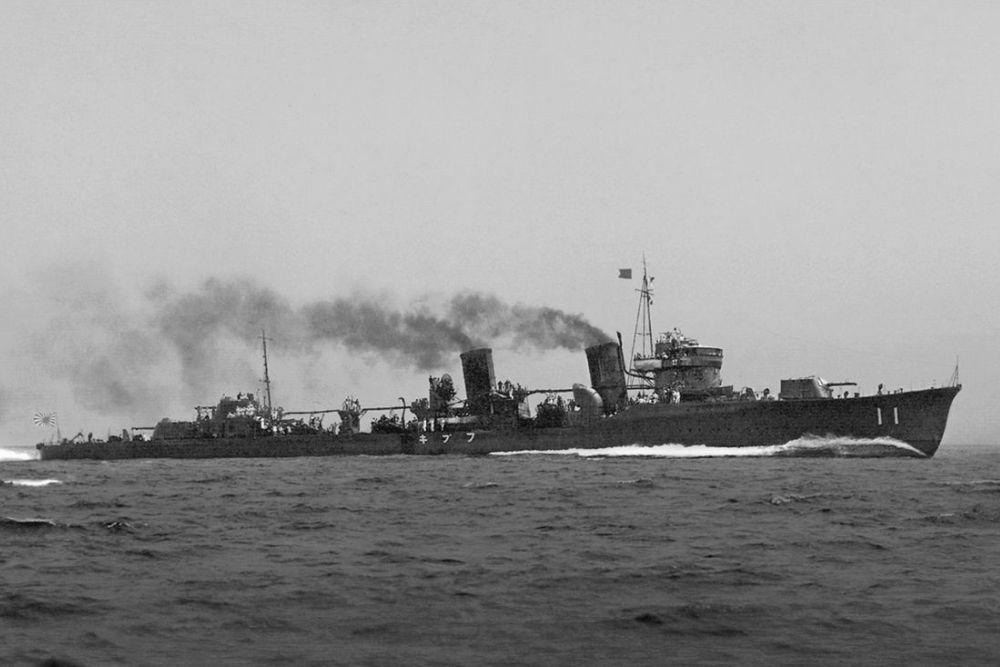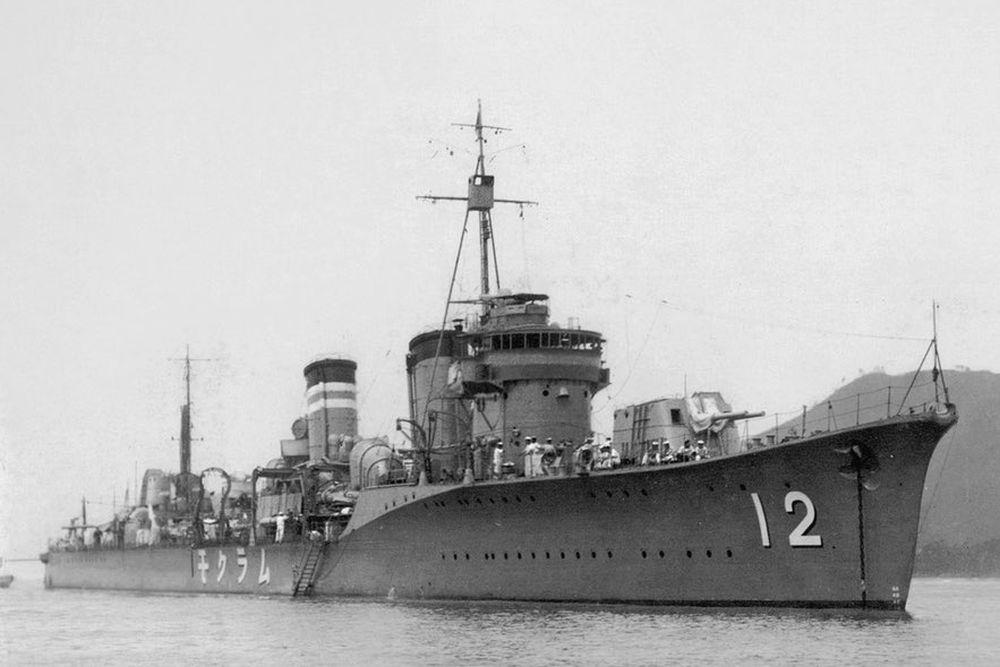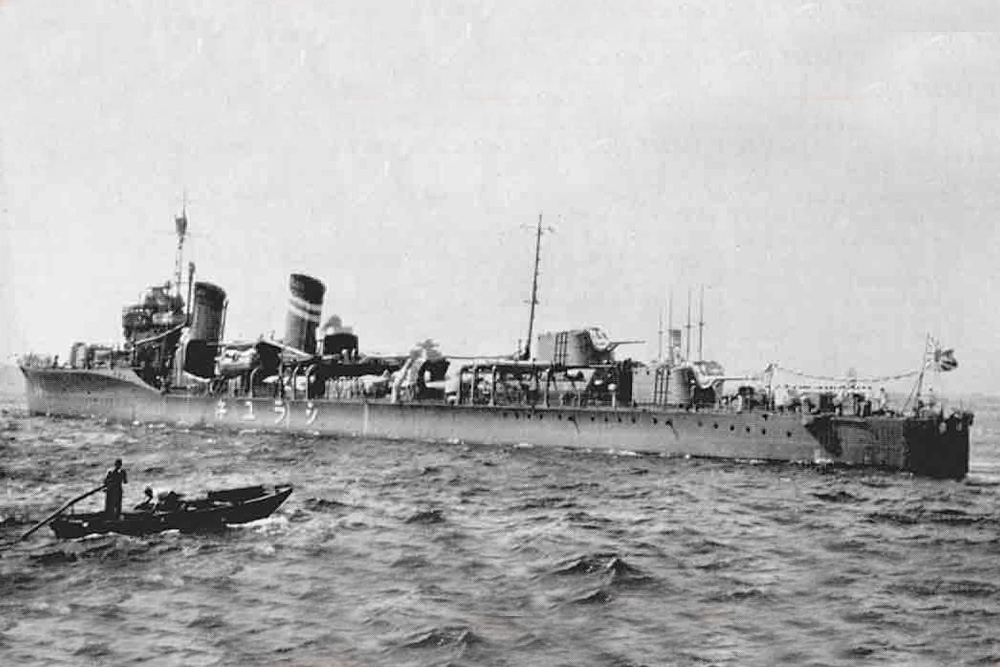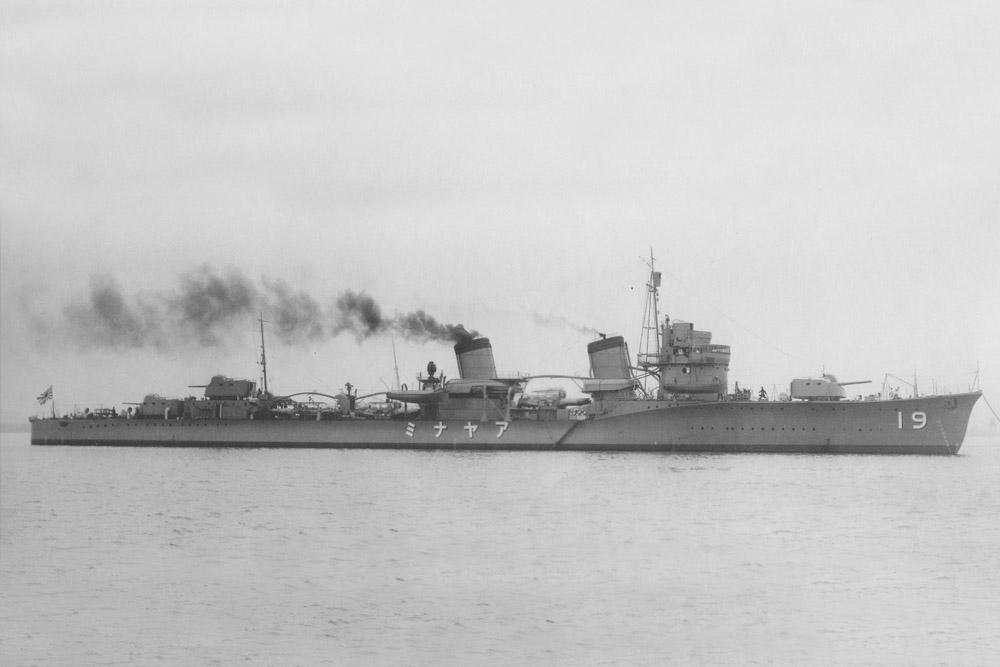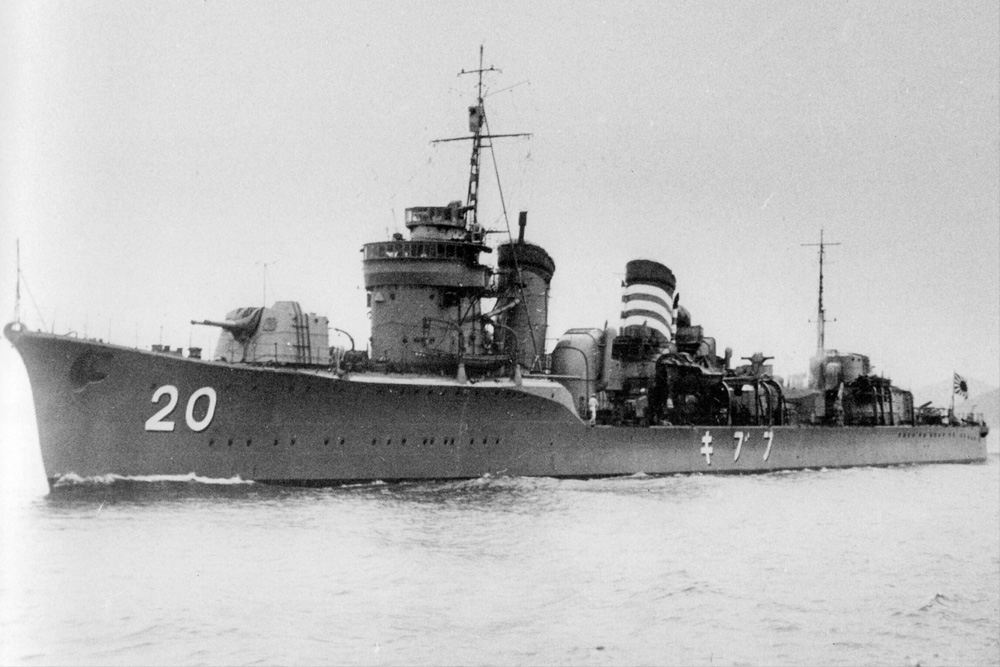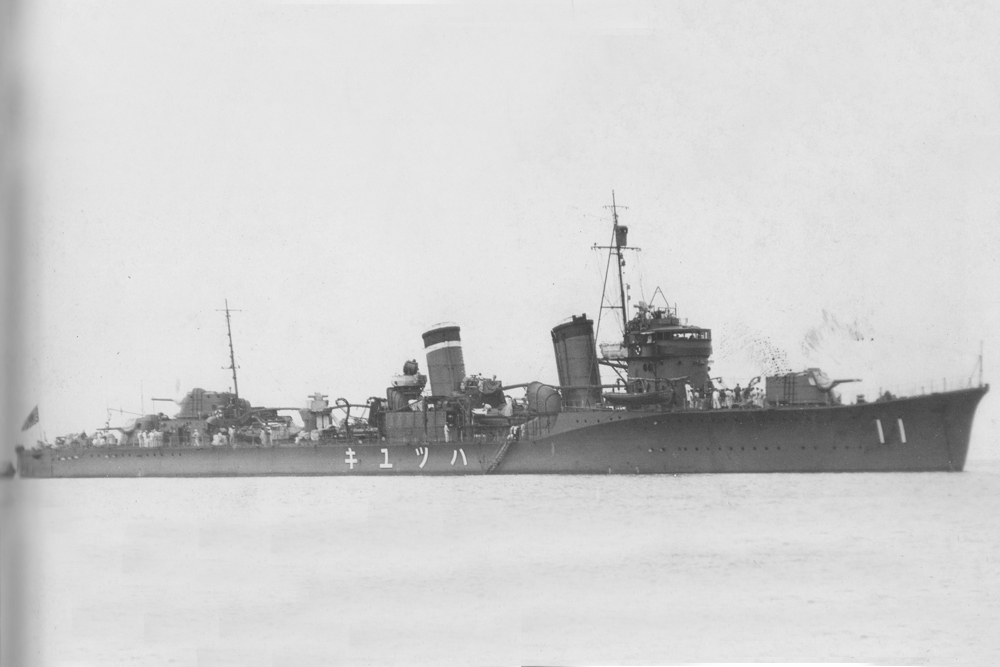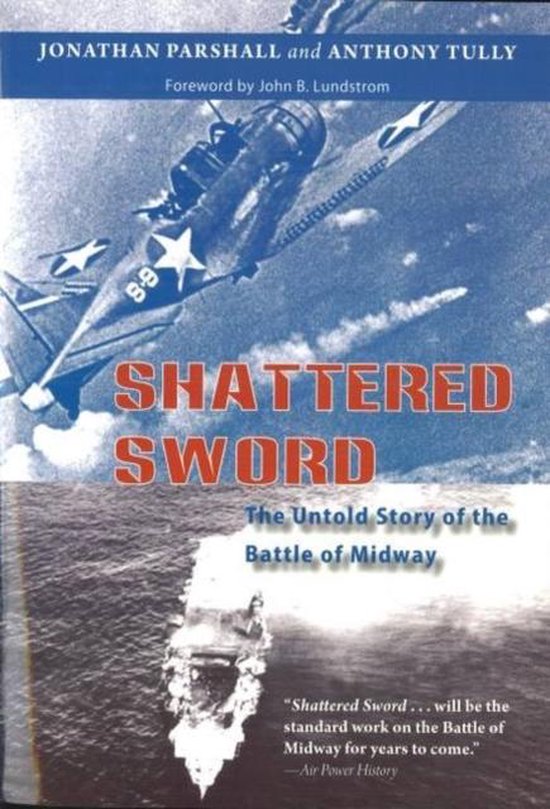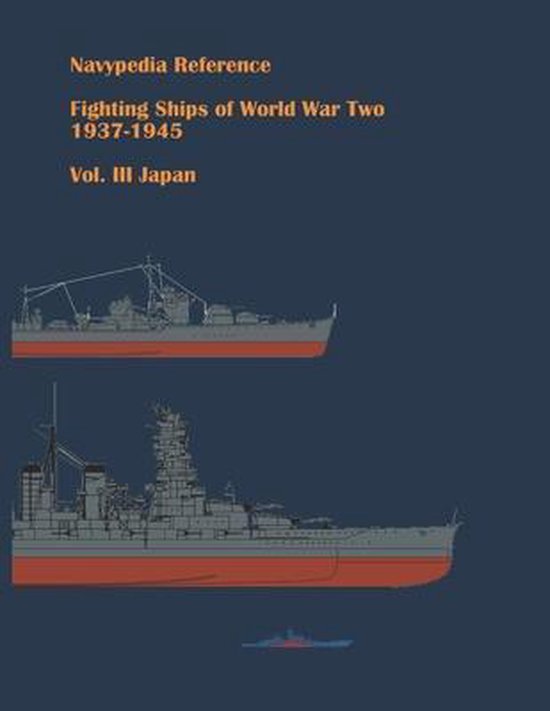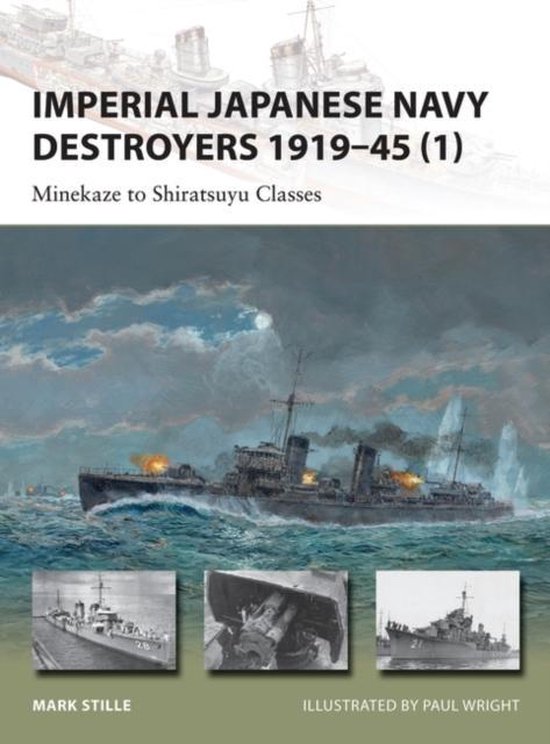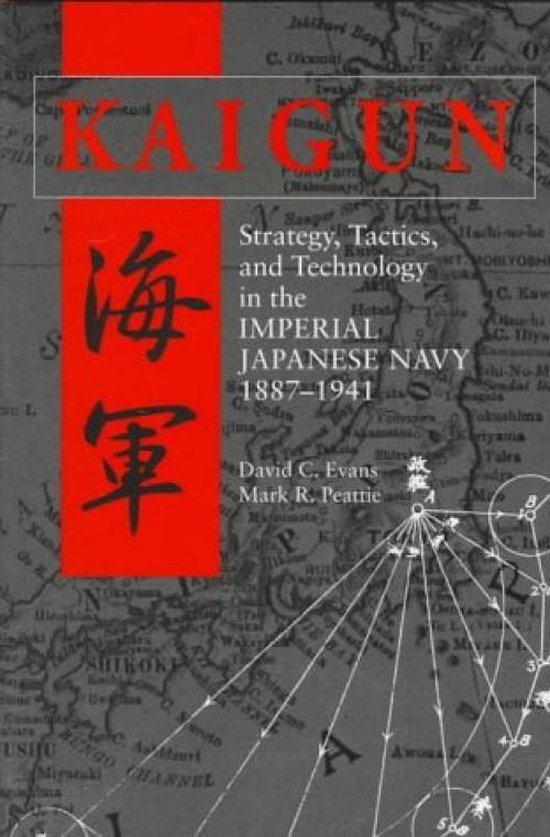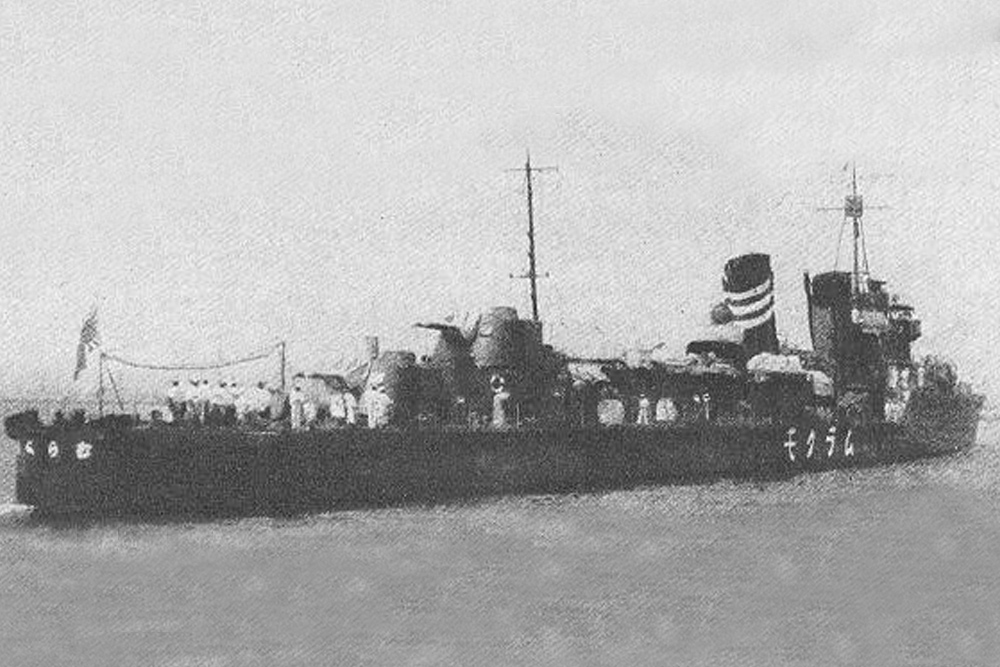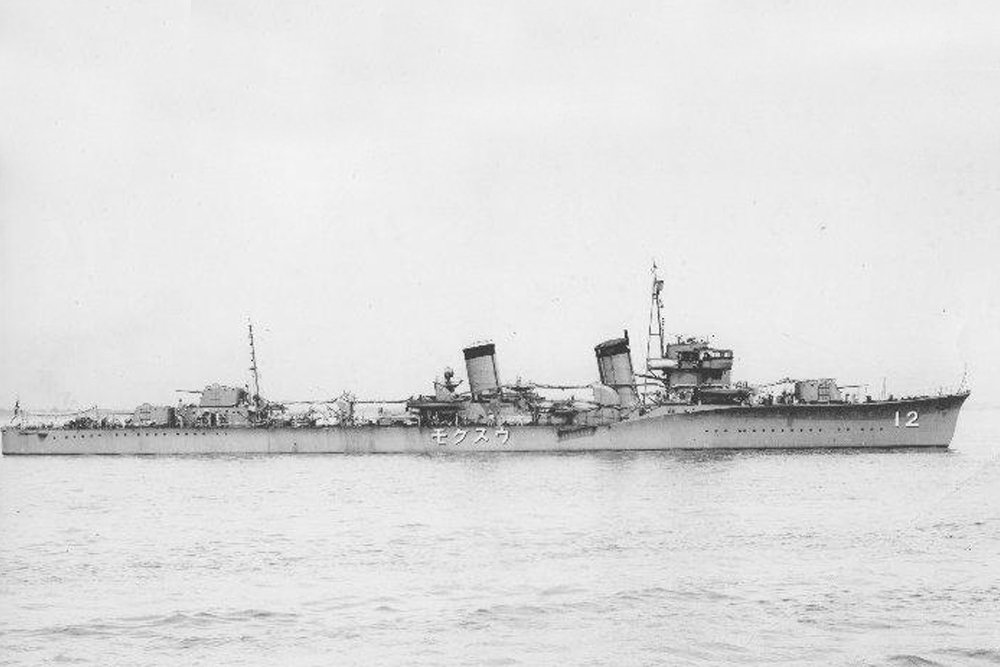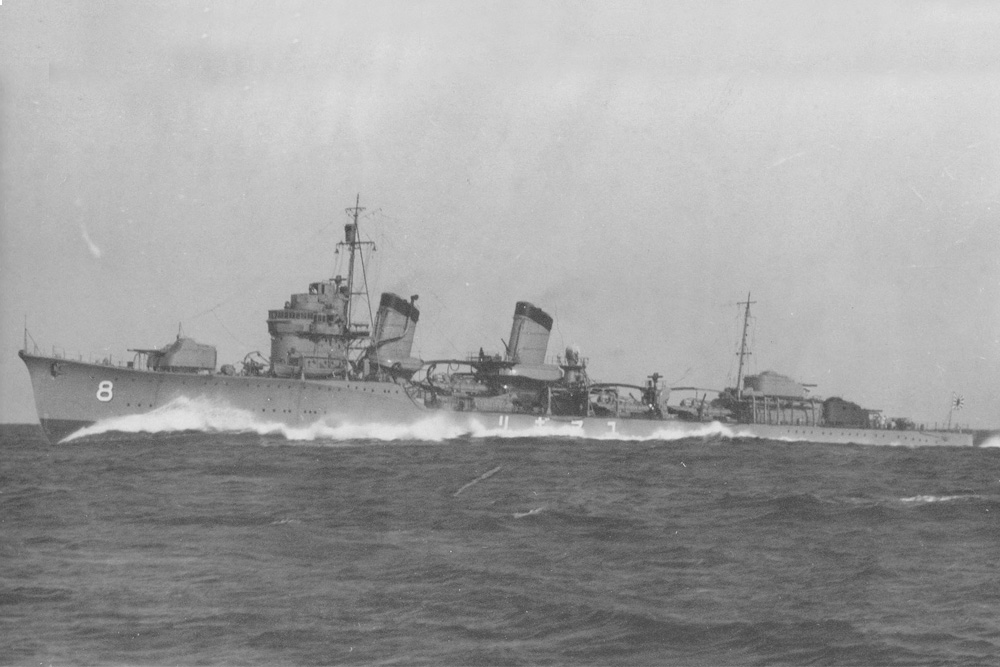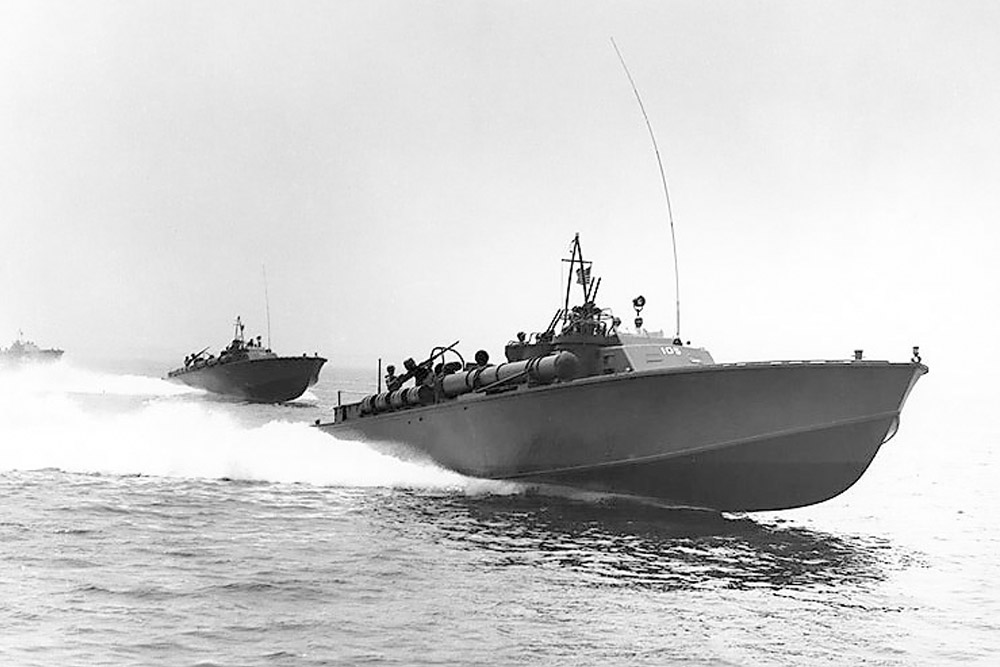Introduction
The design of Japan's Fubuki-class destroyers was highly revolutionary and set a new trend for this type of navy ships. For the first time, double-barrelled 5-inch turrets were used on destroyers, whereby the turret itself had a watertight construction and no longer had to be rotated manually. Until then, destroyers all over the world had open-air gun emplacements or turrets that were left open at the rear. Also, an automatic torpedo reload installation was used for the first time.
Definitielijst
- torpedo
- A weapon of war. A cigar shaped body fitted with explosives and a propulsion and control mechanism. Intended to target after launch a nearby enemy ship and disable it by underwater explosion.
Class overview
| Fubuki (Dai-35) | June 19th, 1926: keel laid November 15th, 1927: launched August 10th, 1928: commissioned October 11th, 1942: sunk in combat |
| Shirayuki (Dai-36) | March 19th, 1927: keel laid March 20th, 1928: tewaterlating December 18th, 1928: commissioned March 3rd, 1943: sunk in combat |
| Hatsuyuki (Dai-37) | April 12th, 1927: keel laid September 29th, 1928: launched March 30th, 1928: commissioned July 17th, 1943: sunk in combat |
| Miyuki (Dai-38) | April 30th 1927: keel laid June 26th, 1928: launched June 29th, 1929: commissioned June 29th, 1934: sunk by collision |
| Murakumo (Dai-39) | April 25th, 1927: keel laid September 27th, 1928: launched May 10th, 1929: commissioned October 12th, 1942: sunk in combat |
| Shinonome (Dai-40) | August 12th, 1926: keel laid November 26th, 1927: launched July 25th, 1928: commissioned December 17th, 1941: sunk in combat |
| Usugumo (Dai-41) | October 21st, 1926: keel laid December 26th, 1927: launched July 26th, 1928: commissioned July 5th, 1944: torpedoed |
| Shirakumo (Dai-42) | October 27th, 1926: keel laid December 27th, 1927: launched July 28th, 1928: commissioned March 16th, 1944: torpedoed |
| Isonami (Dai-43) | October 19th, 1926: keel laid November 24th, 1927: launched June 30th, 1928: commissioned April 9th, 1943: torpedoed |
| Uranami (Dai-44) | April 28th, 1927: keel laid November 29th, 1928: launched June 30th, 1929: commissioned October 26th, 1944: torpedoed |
History
Because Japan strictly adhered to the restrictions dictated by international naval treaties, all Japanese ships built in this period shared a similar shortcoming: too much and too heavy armament was crammed into ships that were actually too small. Modernisation from 1935 solved this problem.[1][2]
The Fubuki-class was the first of a series of three groups of "Special Type" Destroyers. This first group of 10 ships was constructed in 1928 and 1929. The other two groups of similar design, albeit with minor adjustments, were the Ayanami-class (1929) and the Akatsuki-class (1932). Formally, the Ayanami-class (1929) ships belonged to the same class, but due to the various changes we treat them as their own class. This first group of Fubuki-class ships was equipped with Model "A" gun turrets, which allowed for an elevation of 40 degrees of the gun barrels. The next group received guns that could be elevated higher and therefore used as anti-aircraft defence. The three groups/classes originated from one design and first construction started in October 1922. Although the original design catered for a 2,000 ton standard weight, it was eventually decided to allow for a weight of 1,750 tons only.[3][4]
As mentioned earlier, the basic design for the Fubuki-class was a 2,000-ton displacement ship armed with a 127 mm gun and nine (3x3) 610 mm torpedo launchers. A speed of 40 knots (74 km/h) had to be possible. Due to the Washington Fleet Treaty in 1923, the design had to be adjusted accordingly whereby the displacement was reduced to 1,680 tons, but more guns and torpedo launch tubes were added. The propulsion was provided by four Kampon boilers and two 50,000 shp switched turbines. These modifications made it possible to generate a speed of 35 knots (65 km/h). The bow was designed similar to that of the Mutsuki-class (1925), but the deck in particular was modified in such a way that it increased its seaworthiness. Initially, these ships were only given numbers, but in August 1928 the Japanese Navy decided to give the ships proper names, although the numbers were also retained.[5]
The main armament of this class consisted of three batteries of two 127 mm / 50 cal Type 3 guns each, which had an elevation of 40 degrees. The torpedo installation consisted of three triple 610 mm torpedo launchers. The anti-aircraft armament consisted of two 7.7mm Type 92 machine guns positioned in front of the second funnel. In 1933, the Type 90 torpedoes were replaced by new oxygen-powered Type 93 torpedoes. Between 1942 and 1943, the ships' anti-aircraft defences were drastically expanded. All ships were fitted with Model "B" turrets and the "X" turret was replaced by six 25mm anti-aircraft guns. Additionally, another eight 25mm guns and two 13mm machine guns were fitted on each ship. The reserve torpedoes were partly removed and the torpedo launchers were given an armoured shield. The original mine sweeping installation was replaced by four depth charge launchers. In 1944, the remaining ships received another overhaul. The anti-aircraft armament was expanded to 22 x 25mm and 6 to 10 x 13mm guns. As of November 1943, the ships were equipped with radar.[6][7]
Of the ten ships in this first group, designated as the Fubuki-class, nine ships were lost in combat during the Second World War. Only the Miyuki (Dai-38) has previously been lost due to a collision. Five ships were lost due to air raids, one was sunk in a naval battle and three went down by torpedoes.[8]
Definitielijst
- mine
- An object filled with explosives, equipped with detonator which is activated by either remote control or by colliding with the targeted object. Mines are intended to destroy of damage vehicles, aircrafts or vessels, or to injure, kill or otherwise putting staff out of action. It is also possible to deny enemy access of a specific area by laying mines.
- radar
- English abbreviation meaning: Radio Detection And Ranging. System to detect the presence, distance, speed and direction of an object, such as ships and airplanes, using electromagnetic waves.
- torpedo
- A weapon of war. A cigar shaped body fitted with explosives and a propulsion and control mechanism. Intended to target after launch a nearby enemy ship and disable it by underwater explosion.
Technical specifications
| Class: | Fubuki-class |
| Number of ships built: |
10 |
| Country: |
Japan |
| Type: |
Destroyer |
| Displacement: |
1,750 lt (1,780 t) standaard 2,050 lt (2,080 t) fully loaded |
| Length: |
118.41 meter |
| Beam: |
10.40 meter |
| Draft: |
3.20 meter |
| Propulsion: |
2 shaft Kampon geared turbines 3 boilers 50,000 shp (37,000 kW) |
| Speed: |
38 knots (70 km/h) |
| Bereik: |
9,200 km (at 14 knots) |
| Armament: |
3x2 127 mm/50 caliber SP/DP Model 1914 guns 2x1 Type 93 13mm machine guns 3x3 610 mm torpedo launchers 18x Type 93 torpedos 18x depth charges |
| Complement: |
197 |
Notes
- Parshall, 2007, pag. 336
- Stille, 2013, Pag. 21-23
- Gogin, 2021, pag. 90-91
- Stille, 2013, Pag. 21
- Gogin, 2021, pag. 91
- Gogin, 2021, pag. 91
- Stille, 2013, Pag. 25
- Gogin, 2021, pag. 93
Definitielijst
- caliber
- The inner diameter of the barrel of a gun, measured at the muzzle. The length of the barrel is often indicated by the number of calibers. This means the barrel of the 15/24 cannon is 24 by 15 cm long.
- Destroyer
- Very light, fast and agile warship, intended to destroy large enemy ships by surprise attack and eliminating them by using torpedoes.
- torpedo
- A weapon of war. A cigar shaped body fitted with explosives and a propulsion and control mechanism. Intended to target after launch a nearby enemy ship and disable it by underwater explosion.
Information
- Article by:
- Wilco Vermeer
- Translated by:
- Simon van der Meulen
- Published on:
- 10-03-2025
- Feedback?
- Send it!
Related sights
Related books
Sources
- BROWN, D., Warship Losses of World War Two, US Naval Institute Press, 1990.
- EVANS, D., Kaigun, US Naval Institute Press, 1979.
- GOGIN, I. & DASHYAN, A., Fighting Ships of World War Two volume 3, Navypedia LLC, Gatchina, 2021.
- HOWARTH, S., The Fighting Ships of the Rising Sun, Atheneum, 1983.
- JENTSURA, H., Warships of the Imperial Japanese Navy, 1869–1945, US Naval Institute Press, 1976.
- MCCURTIE, F.E. e.a., Jane's fighting ships of World War II.
- PARSHALL, J., Shattered Sword, Potomac Books Inc, 2007.
- STILLE, M., Imperial Japanese Navy Destroyers 1919-45 (1), Osprey Publishing, Oxford, 2013.
- WHITLEY, M.J., Destroyers of World War 2, Cassell Publishing, 1988.
